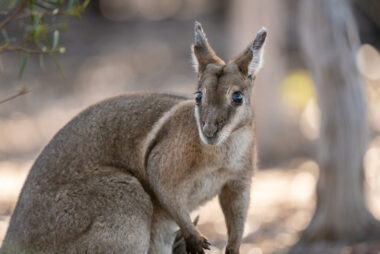FOR IMMEDIATE RELEASE
DATE TUESDAY 5 MARCH
THE CLIMATE COUNCIL is sounding the alarm on a severe bleaching event unfolding across the Great Barrier Reef, with new vision showing the damage that stretches more than 1100 kilometres from Lizard Island to the Keppel Islands.
Marine heatwaves are bleaching swathes of the Southern Great Barrier reef white, which have brought direct observers to tears. With an ominous marine forecast for the coming weeks, authorities could declare another mass bleaching event.
The Reef, a cherished global icon and home to diverse marine life and a cornerstone of Australian natural heritage, faces repeated and escalating threats from climate pollution, caused by the burning of coal, oil, and gas, including more frequent and severe marine heatwaves.
Climate Council CEO Amanda McKenzie said: “Relentless pollution from coal, oil and gas is Australia’s number one environmental problem and it’s literally cooking the Reef. Our environmental protection laws are outdated and in desperate need of an overhaul to prevent new reef-destroying gas and coal projects.
“At least five coal and gas projects have been waved through under our outdated law by the Federal Government since it was elected, and more than 20 other highly polluting proposals are sitting on the Environment Minister's desk right now. These projects will keep being waved through without stronger laws, endangering our Reef, all marine life and the livelihoods of Queenslanders who depend on a healthy, vibrant reef.
“Australians expect our national environment law will protect the precious natural environments like the Great Barrier Reef, and the numerous communities that depend upon it - not destroy them. Unless this law is fixed to make climate pollution a core consideration, the Great Barrier Reef will continue to deteriorate before our children’s eyes.”
Climate Councillor Professor Lesley Hughes said: "As ocean temperatures continue to increase, our precious Great Barrier Reef is in grave danger. The composition and diversity of our once mighty Reef has already been changed after repeated marine heatwaves and mass bleaching events driven by the relentless burning of coal, oil and gas. Our focus must be on limiting further harm as much as possible.
“Australians understand the Reef is irreplaceable. Many Queensland workers and communities rely directly on it for their livelihoods, and every one of us depends on a healthy ocean. Scientists and tour operators are being brought to tears by what they’re observing.
“The Reef can be restored, but it needs at least a decade to recover from a severe bleaching event, and the only way to ensure that can happen is to rapidly reduce climate pollution from coal, oil and gas. The only way to safeguard the Great Barrier Reef as well as everyone and everything that depends on it is to cut climate pollution at the source."
Dr Dean Miller, Climate Council Fellow and reef expert said: "We're seeing the most vulnerable corals to heat stress start bleaching along the length of the Great Barrier Reef, which is alarming.
“It's not just about how many corals are bleaching, but that the ones most at risk are suffering. This stress is affecting corals of all sizes, from the largest ones that have survived past bleaching events to the smallest, youngest corals.
“If the heat stress continues, we'll see more widespread bleaching affecting a higher diversity of coral species, which is a major concern for the reef's health and ultimately its resilience."
For a closer look at the impacts of climate change on the Great Barrier Reef, explore our collection of recently recorded footage.
LINKS TO CURRENT BLEACHING VISION:
Southern GBR
Hervey Bay: Must credit Hervey Bay CoralWatch (Feb 2024)
Heron Island: Must credit Divers for Climate (Feb 2024)
Northern GBR:
Port Douglas/Cairns: BEFORE VISION (October in 2023) & AFTER VISION (Feb 2024)
About us:
The Climate Council is Australia’s leading community-funded climate change communications organisation. We provide authoritative, expert and evidence-based advice on climate change to journalists, policymakers, and the wider Australian community.
For further information, go to: climatecouncil.org.au
Or follow us on social media: facebook.com/climatecouncil and twitter.com/climatecouncil
Contact details:
For interviews please contact George Hyde on 0431 330 919 or [email protected] or the Media Team on 0485 863 063 or [email protected].


